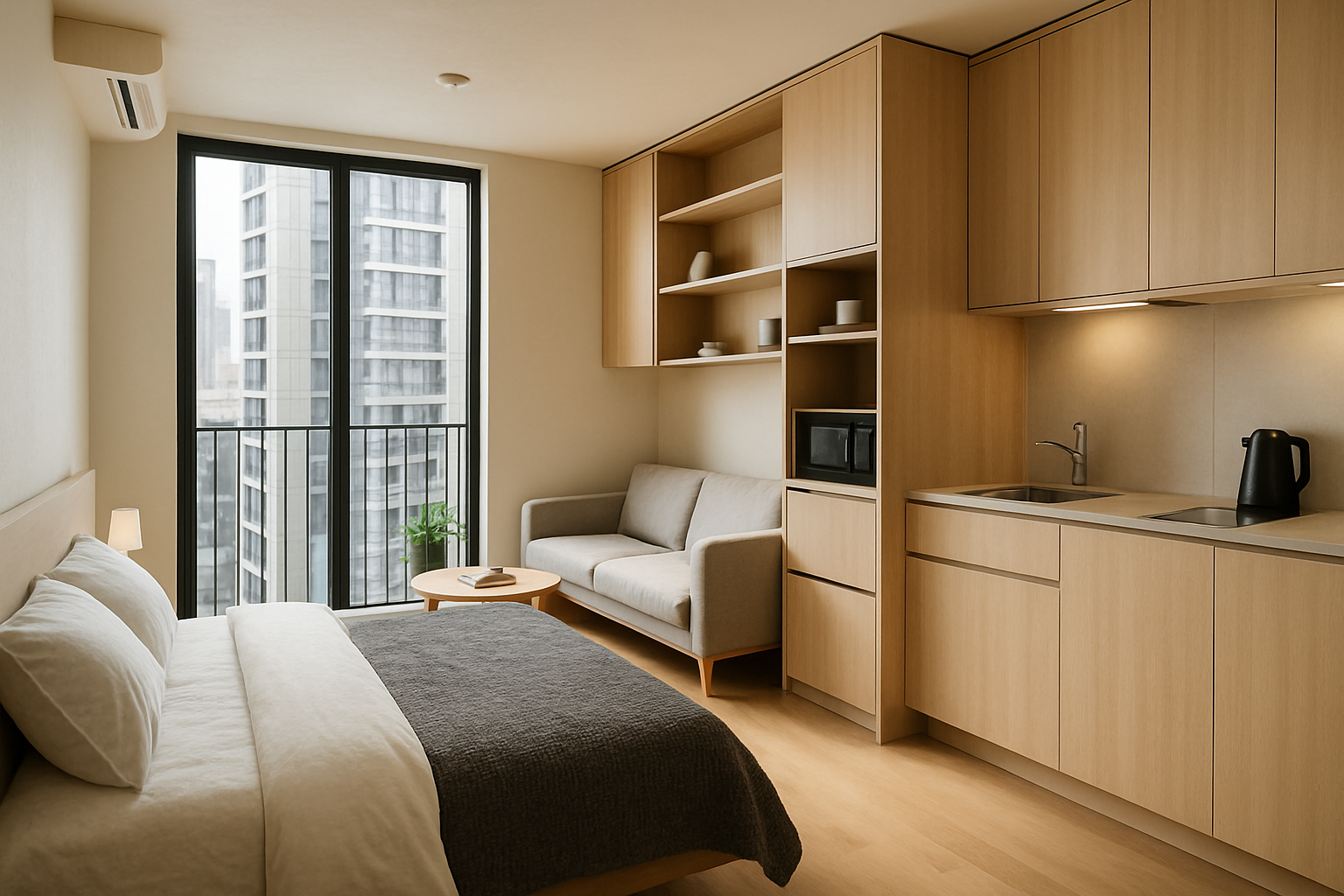Micro-Apartments: The Future of Urban Living?
In the heart of bustling metropolises, a housing revolution is quietly unfolding. Micro-apartments, compact living spaces typically ranging from 150 to 400 square feet, are reshaping urban real estate landscapes. These tiny dwellings, once considered a niche market, are rapidly gaining traction among city dwellers seeking affordable housing solutions in prime locations. As property prices soar and urban populations surge, micro-apartments offer a compelling answer to the pressing question: How can we maximize living space in densely packed cities?

The Economics of Tiny Living
Micro-apartments present a unique economic proposition in the real estate market. For developers, these units offer higher yields per square foot compared to traditional apartments. The ability to fit more units into a single building translates to increased rental income and potentially higher property values. For renters and buyers, micro-apartments provide an entry point into desirable neighborhoods that might otherwise be financially out of reach.
However, the economics aren’t without challenges. Construction costs for micro-apartments can be higher per square foot due to the need for efficient design and high-quality finishes to maximize livability. Additionally, zoning laws in many cities haven’t caught up with this trend, often requiring minimum unit sizes that exclude micro-apartments from certain areas.
Design Innovations: Making Small Spaces Work
The success of micro-apartments hinges on innovative design. Architects and interior designers are pushing the boundaries of spatial efficiency, creating multifunctional furniture and incorporating smart home technology to enhance livability. Foldable beds that transform into desks, kitchens that tuck away into walls, and AI-powered systems that adjust lighting and temperature are just a few examples of how design is evolving to meet the demands of micro-living.
Storage solutions play a crucial role in these compact spaces. Vertical storage, hidden compartments, and modular furniture systems allow residents to maximize every inch of their living area. The challenge lies in creating spaces that feel open and airy despite their limited square footage, often achieved through clever use of lighting, mirrors, and multifunctional spaces.
The Demographic Driving Demand
Micro-apartments are particularly appealing to specific demographic groups. Young professionals, students, and single adults are drawn to these spaces for their affordability and prime locations. The trade-off between space and location is often seen as worthwhile for those who prioritize experiences and urban amenities over square footage.
Interestingly, there’s also a growing interest from empty nesters and retirees looking to downsize while remaining in vibrant urban centers. This diversity in demand is reshaping how developers approach micro-apartment projects, with some buildings offering a mix of unit sizes to cater to different life stages and preferences.
Community and Shared Spaces: The Micro-Apartment Ecosystem
To complement the compact private living spaces, many micro-apartment developments are incorporating extensive shared amenities. Rooftop gardens, co-working spaces, communal kitchens, and fitness centers are becoming standard features. These shared spaces not only provide additional functional areas for residents but also foster a sense of community often lacking in traditional apartment buildings.
This community aspect is increasingly seen as a selling point, particularly for younger renters who value social connections and shared experiences. Some developments are even incorporating programmed events and activities, turning the building into a social hub for residents.
Regulatory Challenges and Urban Planning Implications
As micro-apartments gain popularity, cities are grappling with how to regulate and integrate these new housing types into existing urban frameworks. Minimum size requirements, occupancy limits, and building codes designed for traditional apartments often need to be reevaluated to accommodate micro-units.
Urban planners are also considering the broader implications of widespread micro-apartment adoption. While these units can increase housing density and potentially ease affordability issues, there are concerns about long-term livability and the impact on neighborhood demographics. Some cities are exploring policies that require a mix of unit sizes in new developments to ensure diverse housing options.
The Future Outlook: Scaling Up Micro-Living
As urban populations continue to grow and housing affordability remains a pressing issue, micro-apartments are poised to play an increasingly significant role in the real estate market. Technological advancements in modular construction and smart home systems are likely to further enhance the appeal and functionality of these compact living spaces.
However, the long-term success of micro-apartments will depend on their ability to adapt to changing lifestyles and demographics. The COVID-19 pandemic, for instance, has highlighted the importance of flexible living spaces that can accommodate work-from-home setups. Future micro-apartment designs may need to evolve to include dedicated workspaces or more adaptable layouts.
In conclusion, micro-apartments represent a fascinating intersection of real estate trends, urban planning challenges, and changing lifestyle preferences. As cities continue to densify and housing markets evolve, these compact living spaces offer a glimpse into the future of urban living – one where efficiency, community, and location take precedence over square footage. For investors, developers, and urban dwellers alike, micro-apartments present both opportunities and challenges that will shape the real estate landscape for years to come.





